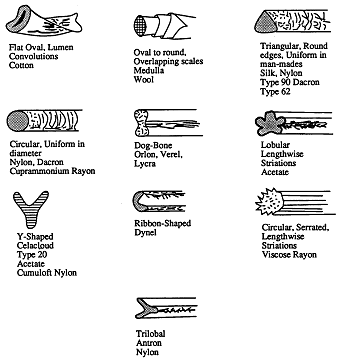Duties and Responsibilities of the Apparel Industrial Enginee
Benefits of Apparel Engineering:
- Work Simplification.
- Increase in productivity.
- Increase in profits.
- Increase in earnings.
Role of Apparel Industrial Engineer:
As
for as the Apparel Engineer concerns having eight areas of
responsibility that need to be well organized given under headings.
- Safety.
- Line balancing.
- Quality –Operation Control.
- Training-How to train the new employees and sewing operators.
- Operator output-maintains high output and also the improving the abilities of those with low output.
- Loss control-minimize off-standard loss.
- Waste control-in materials, supplies and machinery.
- Standard conditions-in the workplace, in sewing method, in the machines.
APPAREL Industrial Engineers are also be
showing their skill and attitude towards as an ’Executive as a Leader
‘to maintain the following three areas to be focused mentioned here
under.
- Maintenance.
- Quality work and
- Productivity,
Working together with the co-employees
towards the ‘Team Spirit’. Due to increase the higher productivity, he
has to take the following tasks to be achieved properly.
- Sewing operators transfers between the operations.
- Assigning of off-standard tasks.
- Overtime planning.
- Rights to reject the defective product.
- Rights to take Disciplinary actions against the employees/operators.
- Recommendations for dismissal.
To execute his duties and responsibilities in such a good manner, every industrial engineer must have the primary and secondary obligations.
Primary obligations are listed below:
- Provide safety.
- Proper plan and line balancing the production lines
- Control quality and free from defects.
- Develop the employees and sewing machine operators.
- Material utilization in an economical approach.
- Follow up on low output employees.
- Maintain discipline inside the Apparel factory.
Secondary obligations are mentioned below:
- Bundle handling and movement.
- Adjustments to machines.
- Distributes supplies.
- Handle parts that required reprocessing.
- Samples.
- Maintenance.
- Housekeeping.
- Miscellaneous.
Duties of apparel industrial engineer:
1. Apparel industrial engineers must daily activities are listed below:
- Arrive early to factory.
- Greet arriving employees.
- Encourage them to start work early.
- Check attendance.
- Make adjustments to balance the line as per absence.
- Attend the production meeting and discuss yesterday’s result and today’s targets and plans.
- Plan to increase the employees’ efficiency.
- Plan to improve the outgoing quality.
- Plan to prepare for routine problems or problems that might arise.
2. Apparel engineers are having their work-check list during the day as mentioned below:
- Measure the target vs. actual output in every hour.
- Check quality level.
- Check inline and end line quality reports.
- Discuss with quality inspectors perform quality drill.
- Work with the low output operators.
- Check the proper method and to be implemented.
- Motivate and empower all the operators.
- Follow up on newly joined operators in training.
- Follow up the operator in re-training.
- Identify the bottle neck operations and balance accordingly.
- Provide immediate and continuous follow up to repairs.
- Monitor and follow up on bundle tracking and outgoing bundles.
- Authorize any off-stand and ‘clock out’.
- Order supplies and material for production,
- And at the end of the each and
working must make sure the operators have turned off their machines,
cleaned their work area,kept a piece of fabric under the pressure foot,
and covered their machine.
- Check and authorize the production worksheet.
- Organize production sheets and check the last hour production with the sheet.
- Review the hourly production report and WIP-report.
- Analyze the next day’s needs and take notes for implementation.
- Calculate the next day’s initial inventory according to production information.
3. Apart from the above, he has to do weekly assignment as mentioned below:
- Review the capacity studies of low output operators.
- Plan operator cross training to
solve balancing problems, and as and when required he has to resolve any
operator efficiency problems.
- Follow up and motivate new
employees, work out quality problems with operators; review the proper
method with them when necessary.
Conclusion:
Industrial
Engineers role is very important in the Apparel Manufacturing sector
for the betterment of achieving productivity, quality consciousness on
the product output, employees, operators to be trained well to achieve
targeted efficiency and growth of the industry at most satisfied level.
Books for Reference:
- Apparel Manufacturing Analysis, Sewn product Analysis-GLOCK.R.E .and KUNZ, G.I.
- Industrial Engineering and Management-Mr O.P.KHANNA.
- Industrial Engineering in Apparel Production-Mr .V. RAMESH BABU






